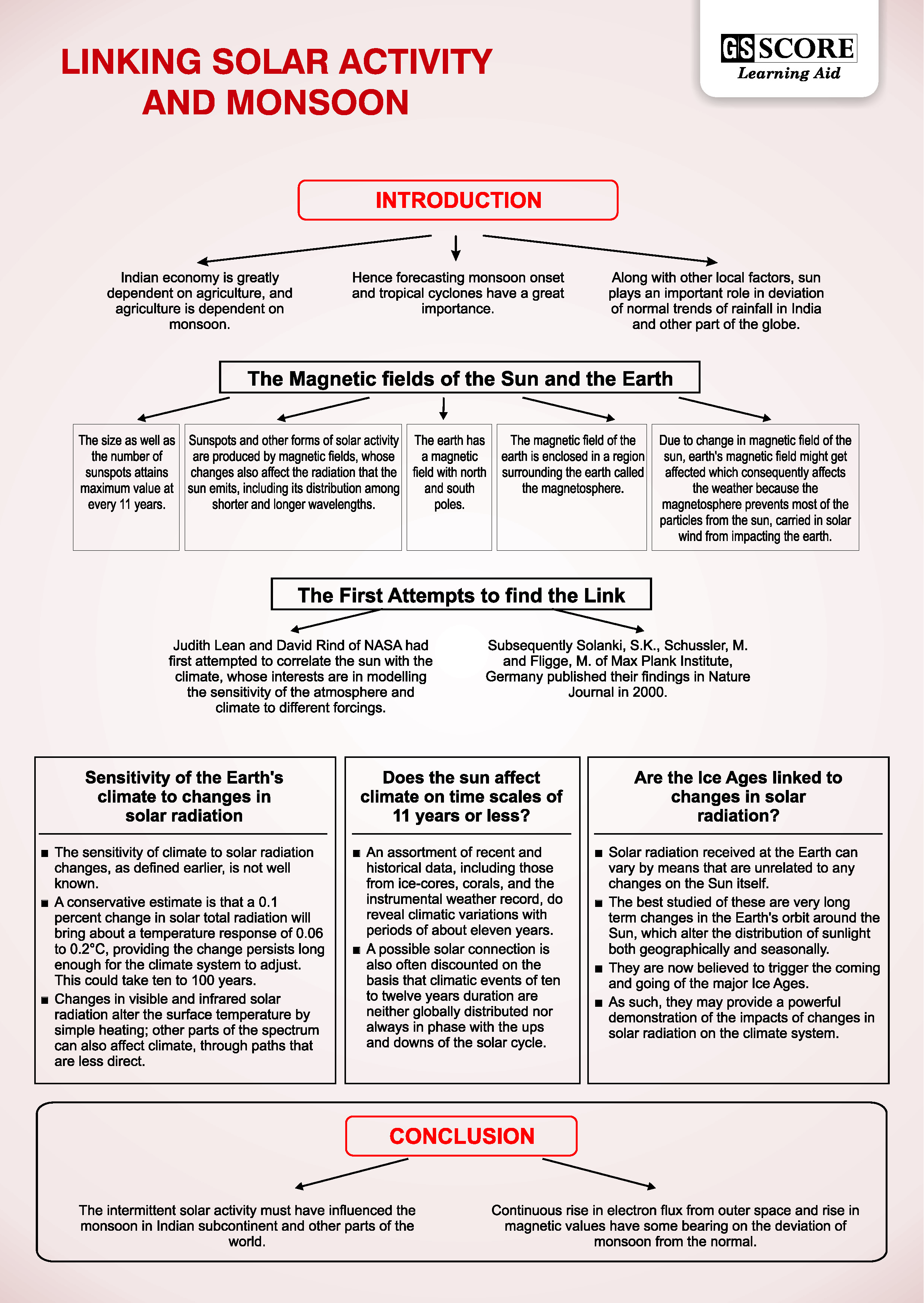

- Solar radiation received at the Earth can vary by means that are unrelated to any changes on the Sun itself.
- The best studied of these are very long term changes in the Earth’s orbit around the Sun, which alter the distribution of sunlight both geographically and seasonally.
- They are now believed to trigger the coming and going of the major Ice Ages.
- As such, they may provide a powerful demonstration of the impacts of changes in solar radiation on the climate system.
- Judith Lean and David Rind of NASA had first attempted to correlate the sun with the climate, whose interests are in modelling the sensitivity of the atmosphere and climate to different forcings.
- Subsequently Solanki, S.K., Schussler, M. and Fligge, M. of Max Plank Institute, Germany published their findings in Nature Journal in 2000.
- The sensitivity of climate to solar radiation changes, as defined earlier, is not well known.
- A conservative estimate is that a 0.1 percent change in solar total radiation will bring about a temperature response of 0.06 to 0.2°C, providing the change persists long enough for the climate system to adjust. This could take ten to 100 years.
- Changes in visible and infrared solar radiation alter the surface temperature by simple heating; other parts of the spectrum can also affect climate, through paths that are less direct.
- An assortment of recent and historical data, including those from ice-cores, corals, and the instrumental weather record, do reveal climatic variations with periods of about eleven years.
- A possible solar connection is also often discounted on the basis that climatic events of ten to twelve years duration are neither globally distributed nor always in phase with the ups and downs of the solar cycle.

Related Articles

